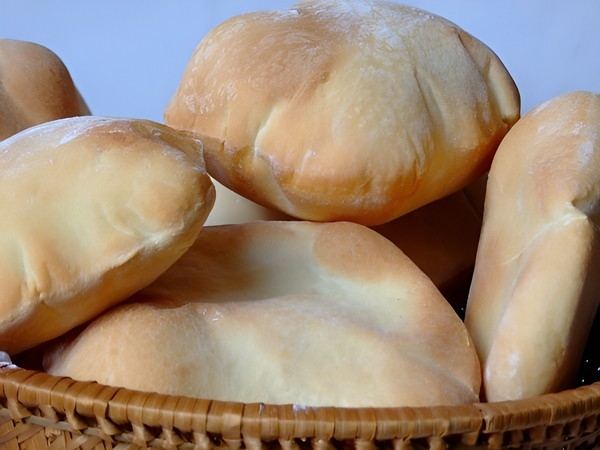Arabic Pita Bread (Khubz Arabi)

Arabic style pita bread, also known as khubz arabi, is the predominant type of bread in the Middle East. Crafting it at home is a straightforward process that requires only a few fundamental ingredients. Below, you'll find a step-by-step recipe for making your own Arabic-style pita bread.
Marthinus StrydomThe Story
Arabic-style pita bread, or khubz arabi, has a rich history deeply intertwined with the Middle East's culinary traditions. Its origins can be traced back thousands of years to ancient Mesopotamia, a region that encompassed parts of modern-day Iraq, Iran, and Syria. In these early civilizations, flatbreads were a staple food, and the precursor to pita bread likely emerged as a simple, unleavened, round flatbread cooked on hot stones or in open flames. Over time, as techniques and culinary traditions evolved, this bread developed into the recognizable pita we know today.
The name "pita" itself is derived from the Greek word "pēktos," which means "solid" or "clotted." This reference to the bread's characteristic pocket-forming ability is a testament to its Greek and Mediterranean influence. As trade routes expanded and cultures intermingled, pita bread became an integral part of Middle Eastern cuisine, used for scooping up dips like hummus and for creating iconic dishes like shawarma and falafel sandwiches. Today, it continues to be a beloved and versatile bread, cherished not only in the Middle East but also worldwide for its delicious taste and versatility in various culinary applications.

Subscripe to my Facebook page.
Subscripe to my Youtube channel.
© All recipes are copyright protected by TheCultureCook.com unless the recipe was adapated from another source. All recipes are uniquely crafted and adapted by TheCultureCook.com. Copyright of some or all of the text reside with the original author.
Ingredients
Method
- Activate the yeast by combining sugar and yeast into a tall pitcher. Add lukewarm water. Stir with a fork to dissolve. Cover with a kitchen towel and let rest for 20 minutes.
- Combine flour and salt in a large bowl. Once the yeast mixture is ready, pour it into the bowl with flour. Use your hands (or a kitchen machine) to mix the ingredients to a dough.
- Place the dough onto a floured work surface. If making dough by hand, knead thoroughly for 3-4 minutes to activate the gluten. Shape into a ball.
- Grease the mixing bowl and place the dough back. Cover with a kitchen towel and let rise (30 mins in warmer countries or up to 2 hours in colder countries).
- Once the dough has risen, remove it from the bowl onto a floured work surface. Briefly knead (by hand). Divide into equal pieces and shape each piece into a ball. Before you do this, set your oven to preheat.
- Roll each dough ball into a flat circle with a diameter of 10-12 cm (4-5 in) and a thickness of about 5 mm (⅕ inch). Place onto parchment paper.
- Add the breads into the preheated oven and bake the bread for 6-8 minutes at 230°C or 450°F until they have fully puffed in the oven.
